Discover the top reasons to visit Milos island in Greece, and why Milos is becoming a must-visit destination in the Cyclades!
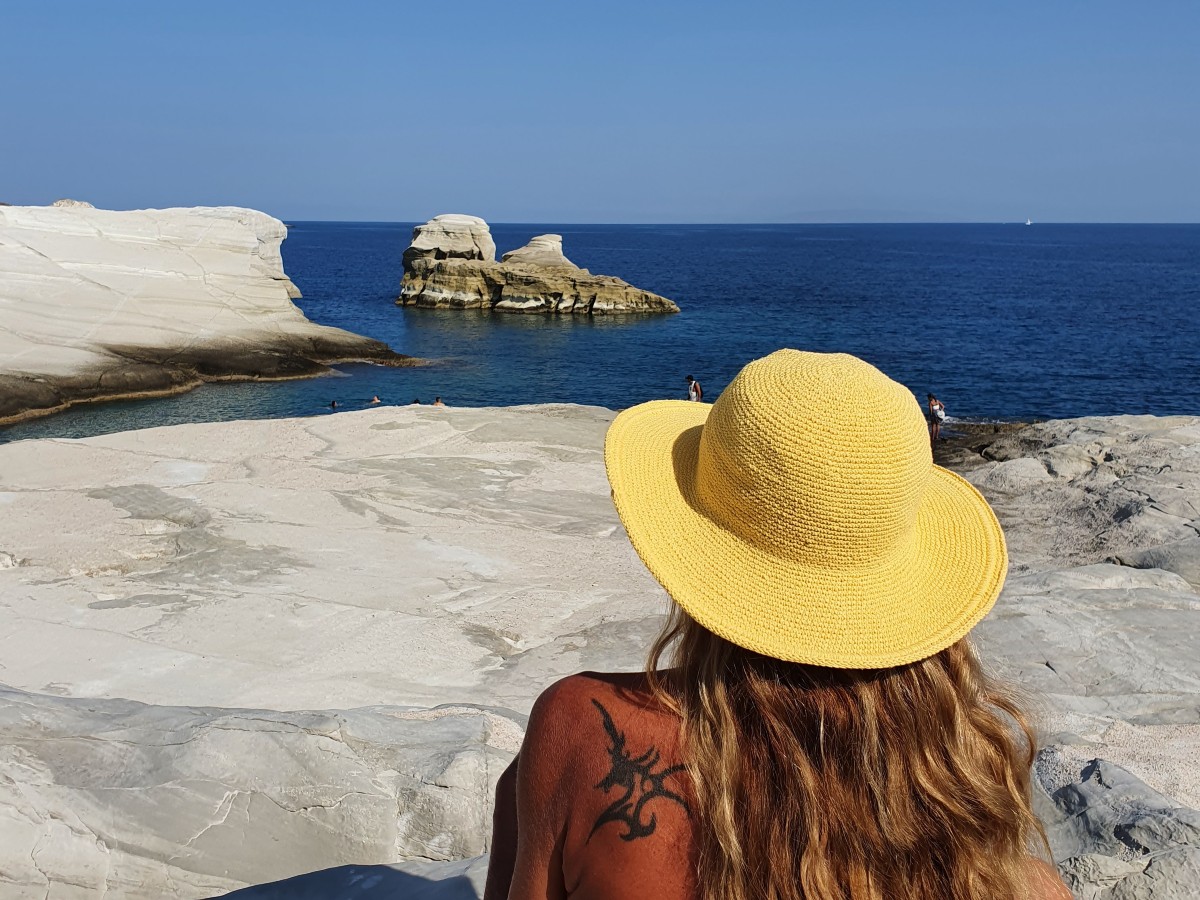
Introducing Milos in Greece
The Greek island of Milos is one of the Cyclades group of islands. They are located in the Aegean Sea, to the east of mainland Greece. Other nearby islands are Santorini and Mykonos.

Milos may be best-known as the island where the Venus de Milo was discovered, or for its rich minerals. These days it’s gaining recognition for its fantastic landscapes and beaches.
All in all, Milos is a rising star when it comes to island destinations in Greece. I’d say it’s one of the most beautiful places to visit in Greece!
We’ve taken a holiday in Milos a couple of times in the last few years. Based on our experiences, here are some top reasons to visit Milos island in Greece.
Why Visit Milos Island in Greece?
Greece has over 200 inhabited islands. Some of them, like Santorini, Mykonos, Rhodes and Crete, have been famous for several decades. Others have been under the radar until fairly recently.
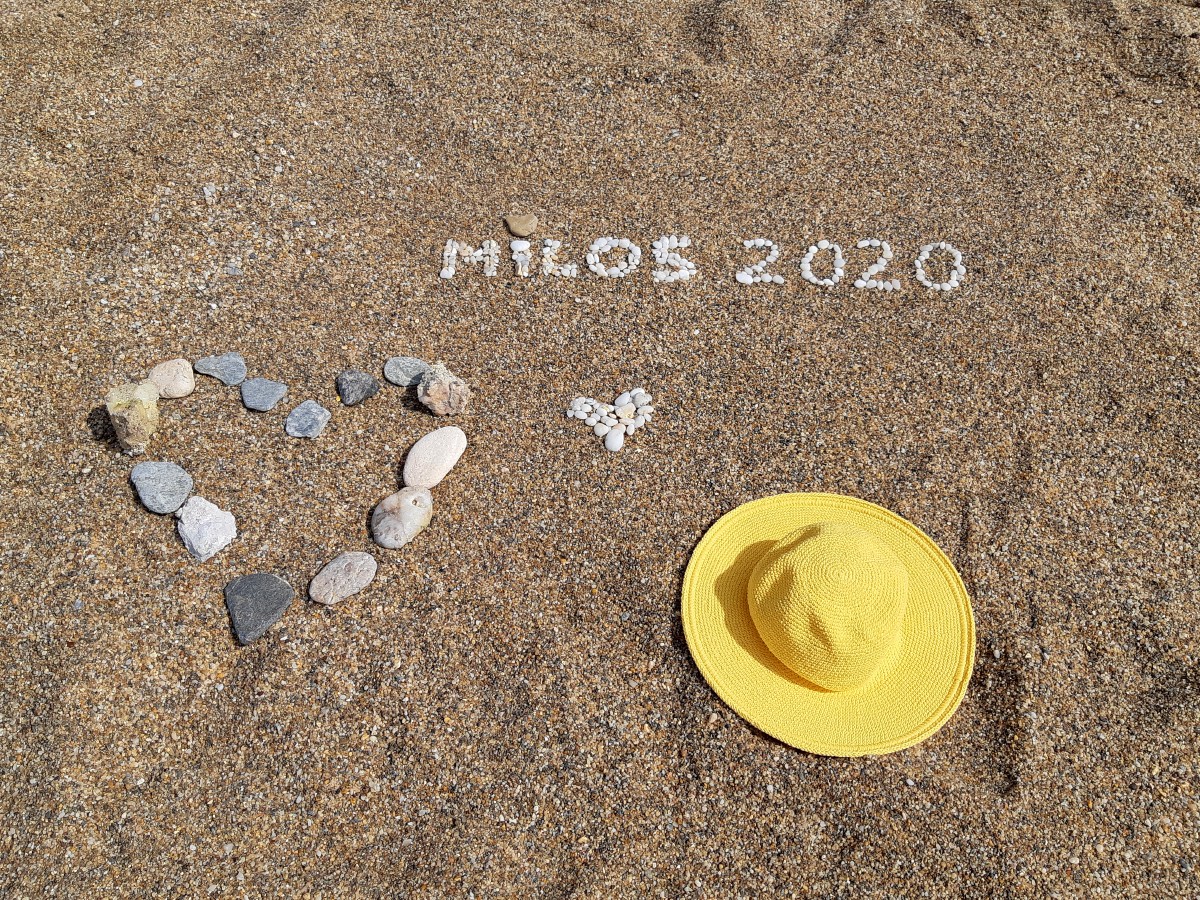
Milos falls in the second category. With tourism steadily rising over the last decade, it’s one of the relatively popular Greek islands to visit these days. However, it has still kept a wild, authentic side, that is more difficult to find in some other Greek destinations.
Here’s some of the top Milos attractions and highlights waiting to be experienced.
1. The world-famous beaches, Sarakiniko and Kleftiko, are out of this world
Milos is a volcanic island, and the local minerals and rocks come in all different colours. As a result, the beaches in Milos are very diverse and overall stunning.
One of the best activities in Milos is a sailing trip to the famous Kleftiko Beach, with the tall, rugged rocks coming out of the sea.
The boat will take you through and under the rocks, and you can snorkel in the sea caves! This was one of our highlights in Milos.
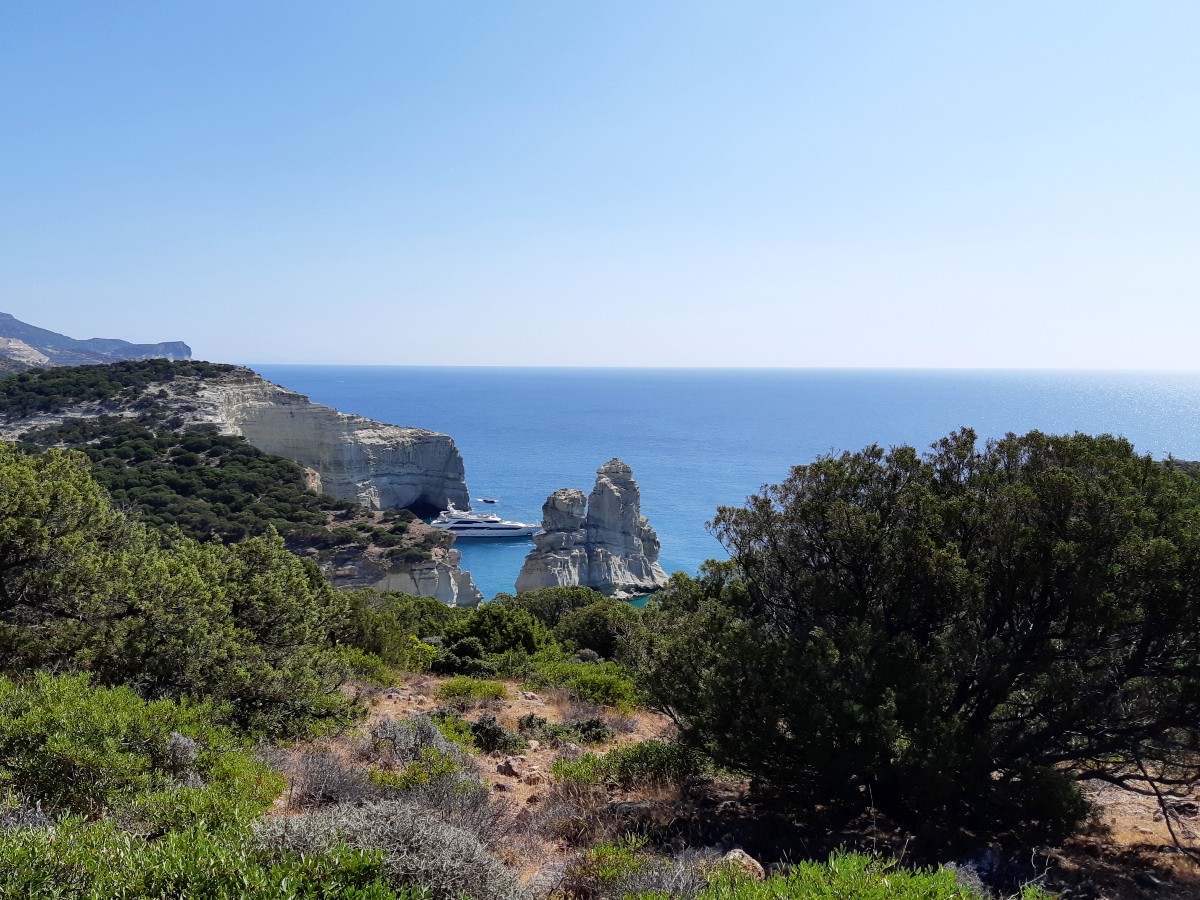
Alternatively, it is also possible to hike to Kleftiko beach. Just bring your hiking shoes, a hat, sunscreen, lots of water and a couple of snacks.
The white lunar landscape that you will have definitely seen in photos is the popular Sarakiniko beach. Walk on the spectacular rock formations and go for a swim in the deep blue sea!
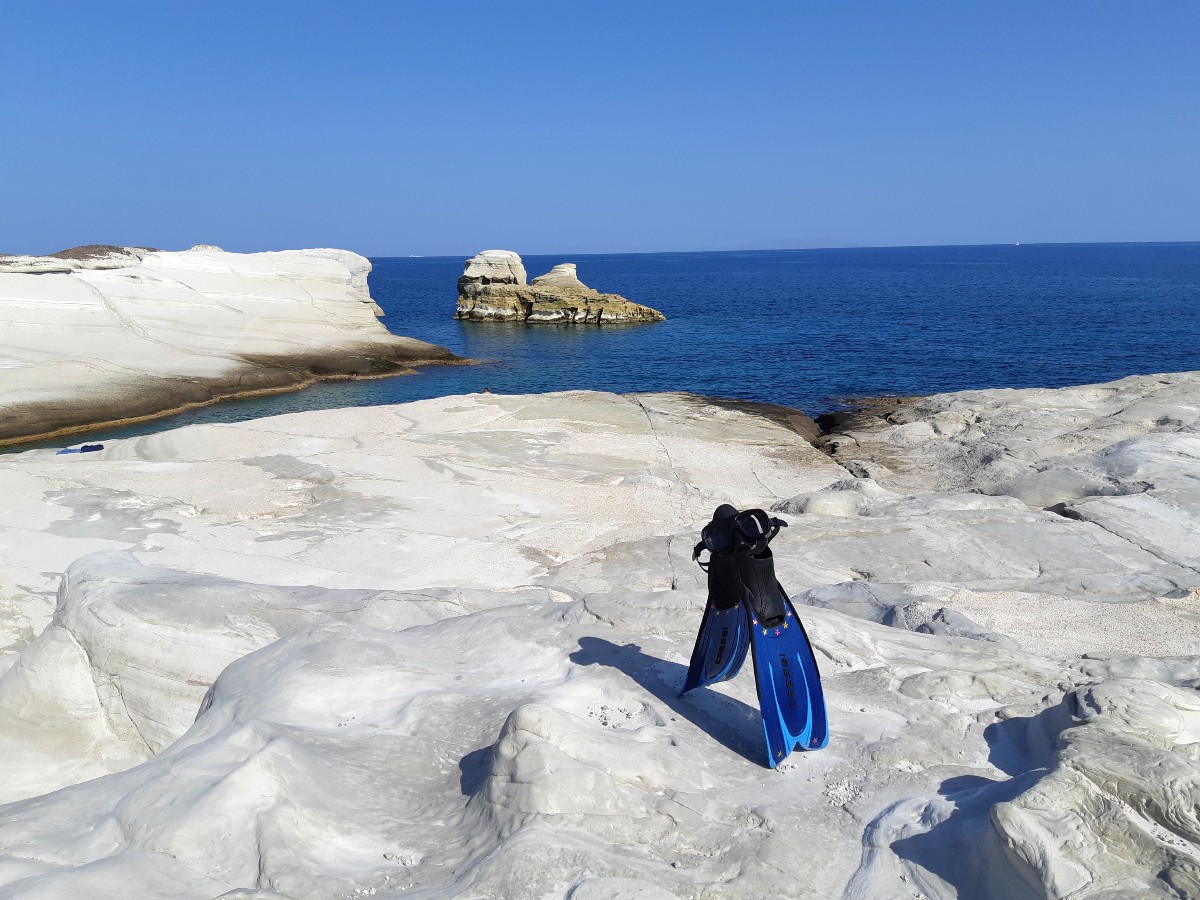
Also, check out Mandrakia. It looks somewhat similar to Sarakiniko beach, but nowhere near as popular. Check out taverna Medusa too.
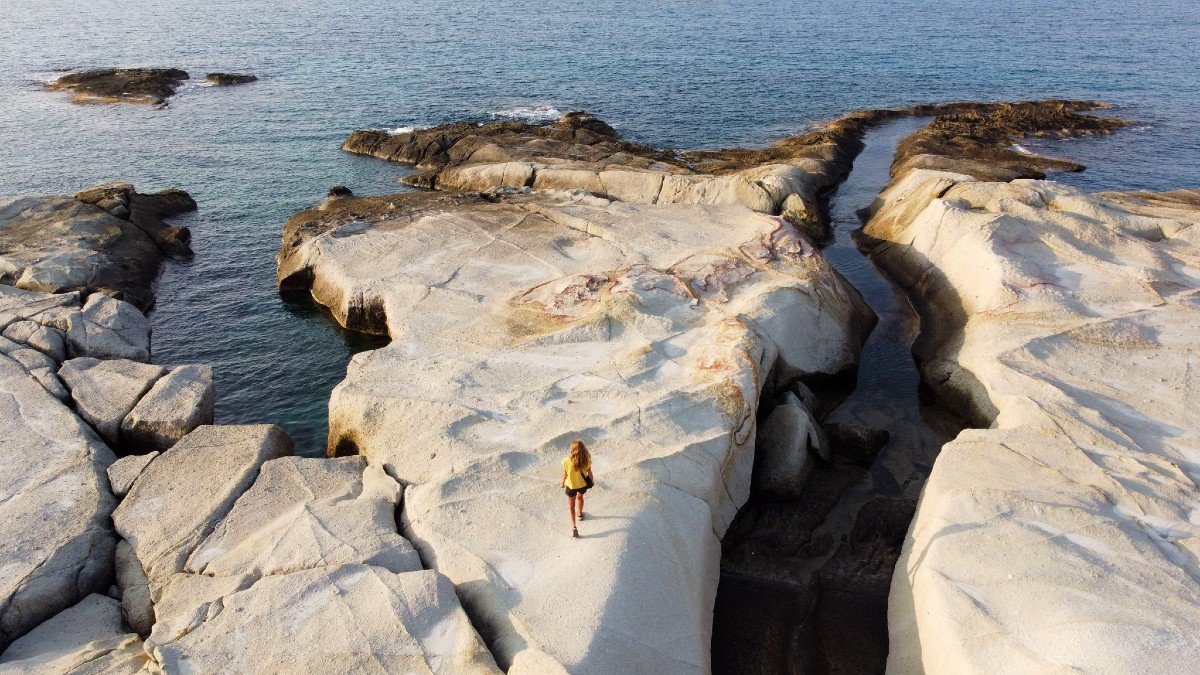
2. Milos has over 75 beautiful beaches
Milos also has you covered in terms of relaxing, sandy beaches. Head to Achivadolimni, Agia Kyriaki, Paliochori or Provatas, and enjoy the calm, shallow waters.
Moreover, there are plenty of beaches in Milos where you can have more privacy. For example, follow the dirt roads to Kastanas, Triades or Ammoudaraki. You may even end up being on your own!

Overall, the island’s beaches are quite diverse, and it’s hard to pick one over another. You can easily spend a week there and never see them all! Here are my top ten beaches in Milos.
Just a note – like most of the Cyclades, Milos can be affected by the winds, especially during the meltemi season.
Before you set off to a beach, check the weather prediction, or even better ask a local. The best beach in Milos is the one with the least wind on the day!
3. The landscapes and geology of Milos are incredible
Milos was created due to volcanic activity. There are two volcanos on the island, and the last eruption was around 90,000 years ago.
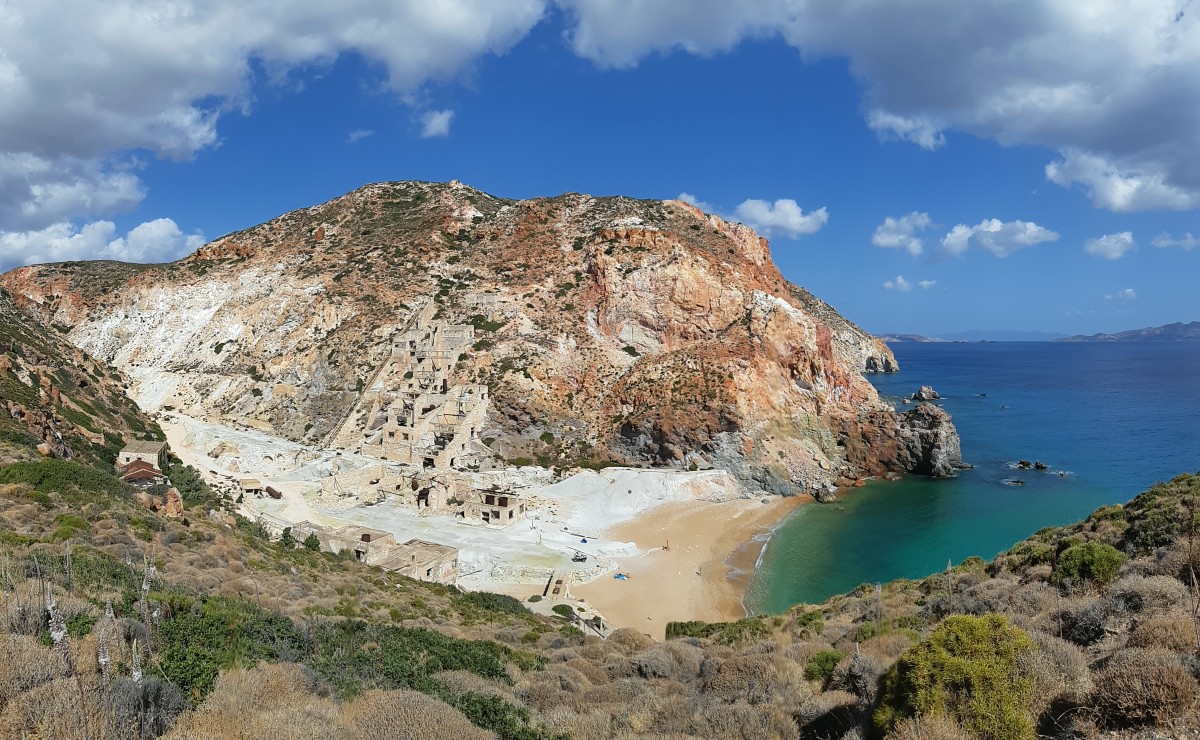
The volcanic rocks cover the largest area of Milos. In fact, wherever you look, you will see multi-coloured rocks! Materials like bentonite, perlite, pozzolana, sulphur and kaolin all exist on the island.
Even if you aren’t an expert in geology, you will definitely be fascinated by the colours. Some of the beaches in Milos, like Sarakiniko and Mandrakia, are surrounded by white rocks.
Others, like Fyriplaka or Paliochori, are multi-coloured.
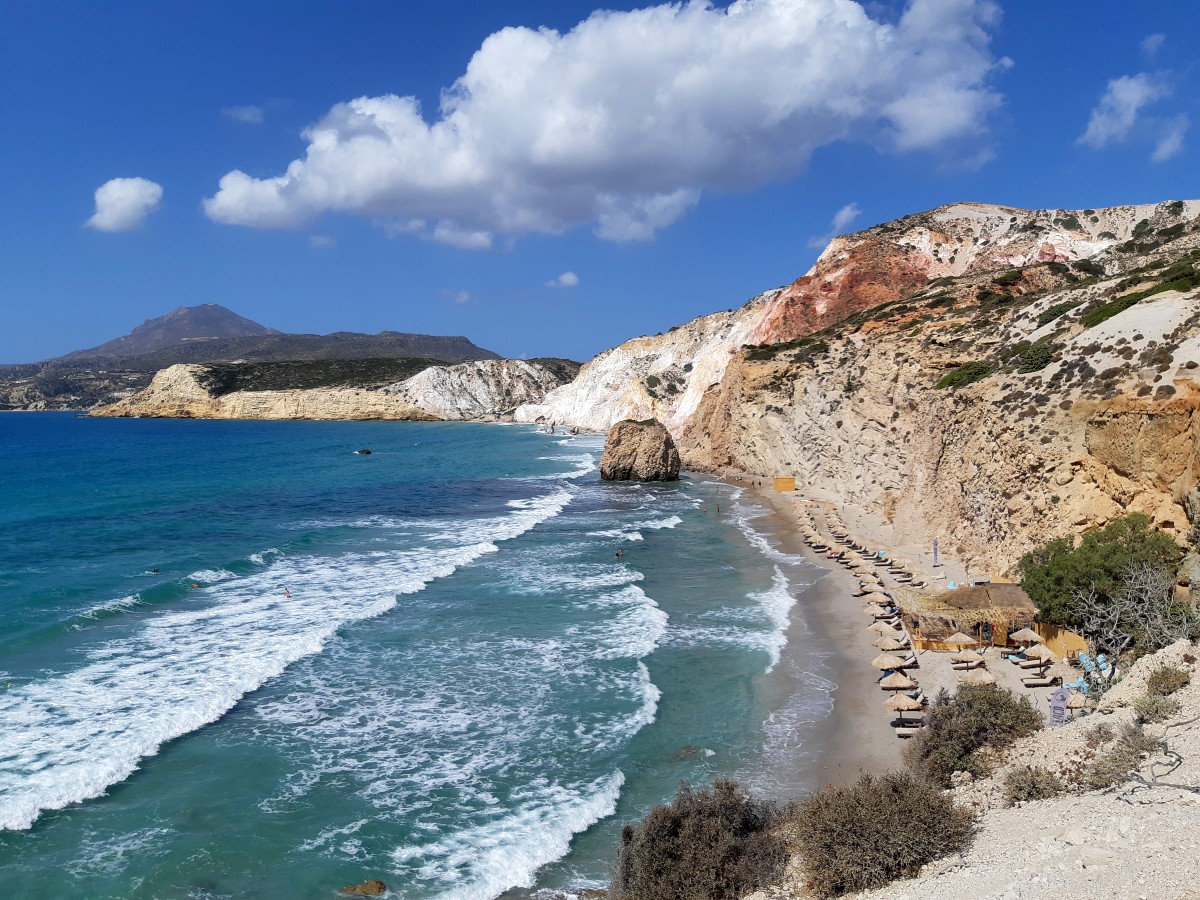
And there is also the famous Thiorichia beach, which was home to sulphur mines, and can best be described as yellow.
4. Milos has a rich mining history
If you drive around Milos, you will immediately notice the mining areas all around the island, where access is not allowed.
Many of these materials are still being extracted, and you are bound to meet the large mining trucks during your trip.
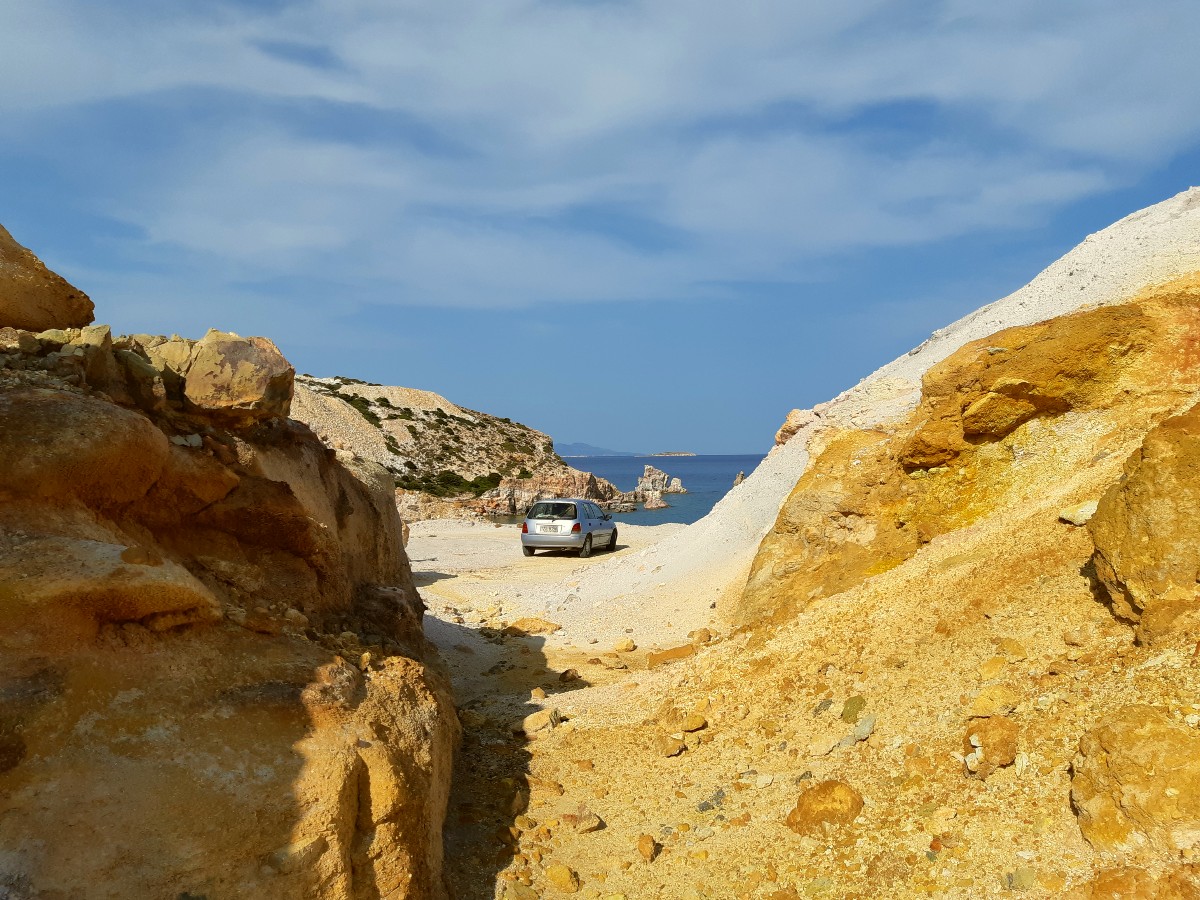
In order to explore Milos, make sure you rent an appropriate vehicle. Milos has a very extensive dirt road network, and a normal car isn’t suitable for most of them.
Our car was slightly damaged on one particularly tricky dirt road – thankfully nothing that couldn’t be repaired! Here’s my full guide on how to get around Milos Greece.
When you are in Adamantas, the port town, allow a couple of hours to visit the Milos Mining museum. It will help you identify all those colourful minerals, while offering an insight to life in Milos over the centuries.
You can also get in touch with Miloterranean, who will offer their unique perspective on the island.
5. Milos has some really picturesque fishing villages
Apart from the otherworldly landscapes, some of the most photographed locations in Milos are its fishing villages all along the coast. You will immediately notice the fishermen’s houses with their colourful doors.
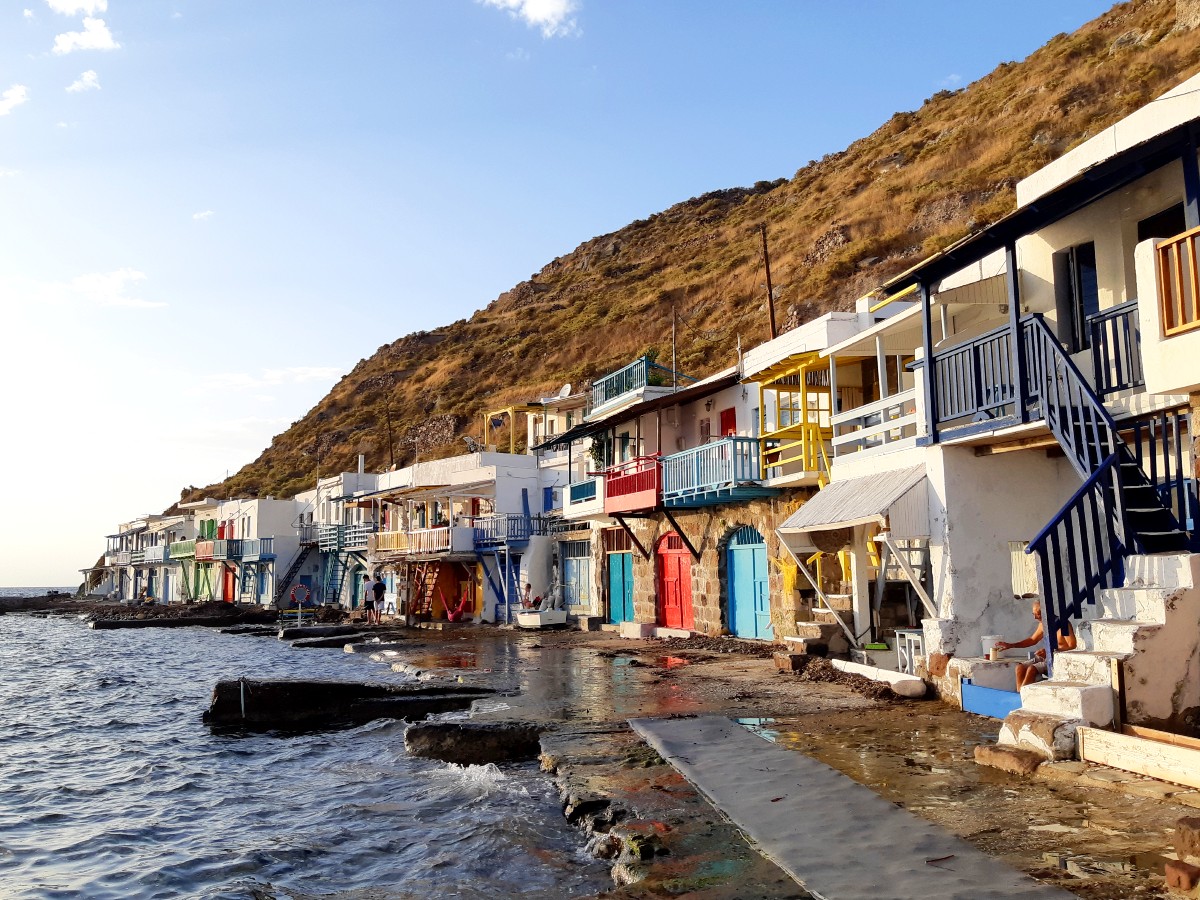
These houses, called syrmata, originally consisted of two floors. The family lived on the upper floor, and the boats were stored down below, at sea level.
The most popular fishing village in Milos, especially during sunset, is Klima. I also liked the small settlements of Firopotamos and Agios Konstantinos, on the north coast.
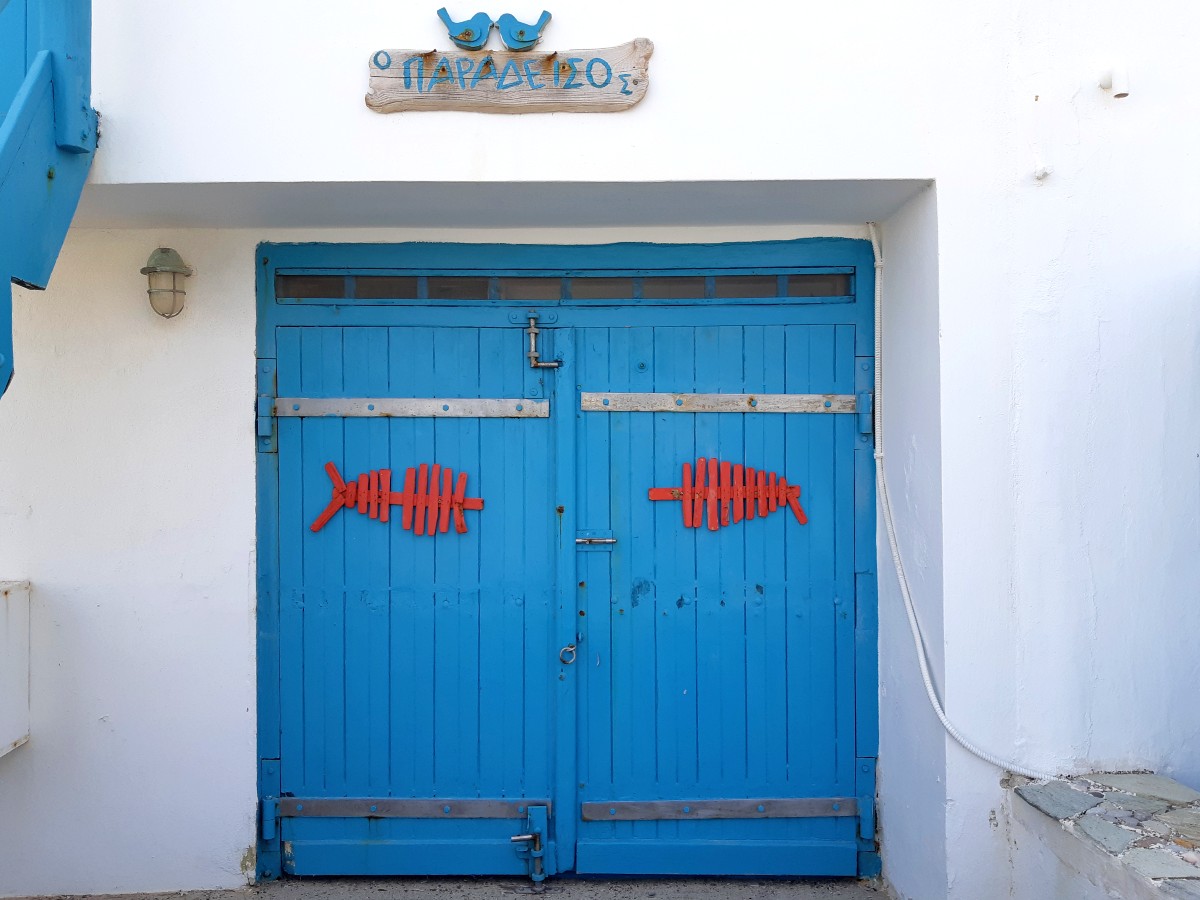
These days, some of the syrmata have been transformed into rooms to let, while locals still live in others.
Tip – if you decide to stay in one of the sirmata, bring shoes that you don’t mind getting wet, as your doorstep will literally be right on the sea!
If you are also going to the nearby island of Kimolos, you will see more of the quaint houses.
6. Plaka, the capital of Milos, is a pretty Cycladic town
The capital of Milos is a quaint town up on the mountain, called Plaka. Like most Cycladic towns, it has narrow alleys, which are full of white-washed houses.
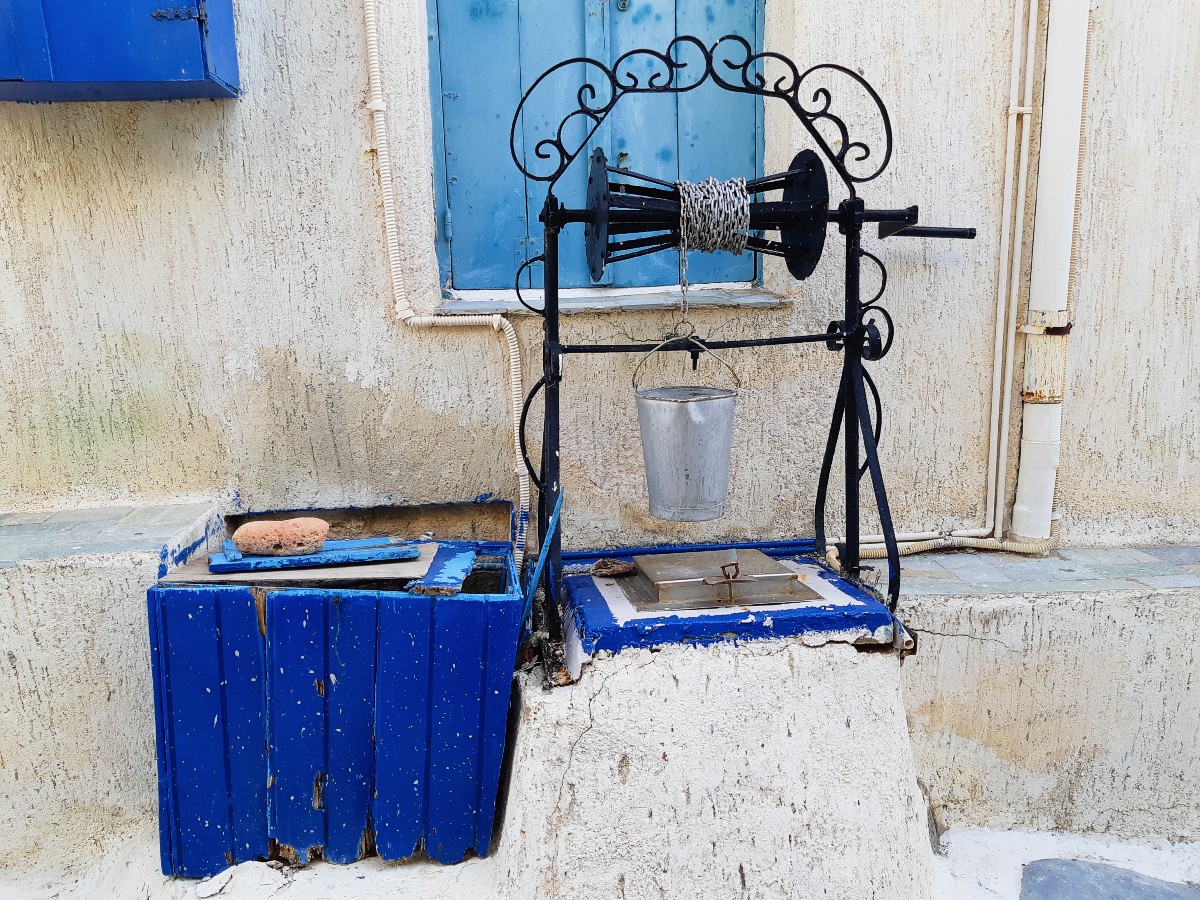
Plaka is a popular place to visit in Milos, as there are many restaurants, cafes and bars. A few museums and plenty of souvenir shops complete the picture. Visitors will also find a range of hotels and rooms to let .
Here’s what to do in Plaka Milos, and the nearby villages of Tripiti and Triovasalos.
7. The views from the Castle are pretty amazing
Above Plaka, you will see the remains of the imposing Castle, or “Kastro” in Greek. It was built by the Venetians in the 13th century, and it offers incredible views to the Aegean Sea.
The route to the top is clearly marked. On the way, you will pass by a few of the famous white-washed churches with blue domes.
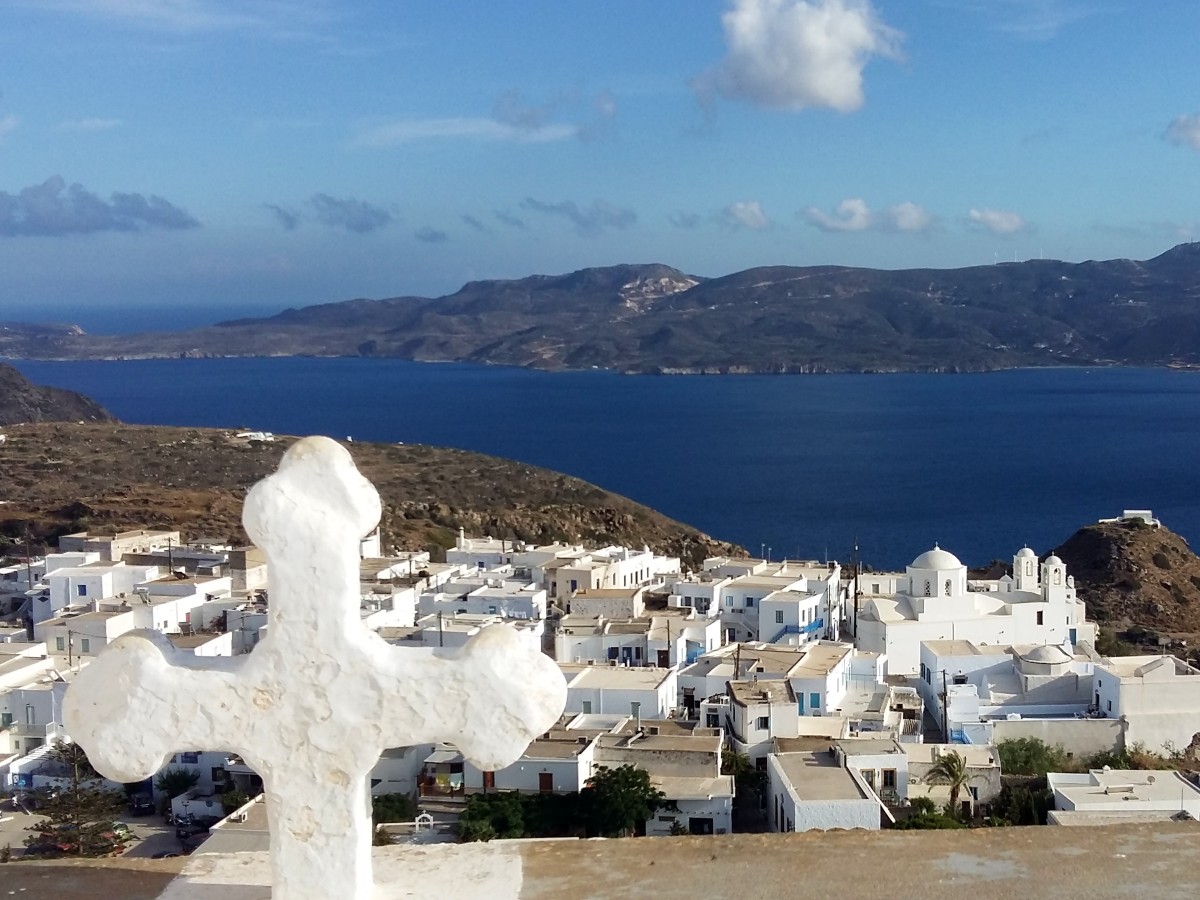
Eventually you will reach the top, where you will find the 200-year-old Panagia Korfiatissa church, dedicated to Virgin Mary. If it’s open, definitely check the interior, where you can see several religious artefacts from the past 500 years.
Allow plenty of time to walk up, as you will want to enjoy all the beautiful views. An hour should be sufficient for most people, but don’t underestimate the time you’ll need to take photos!
8. Milos has some unbelievable sunsets
Think “sunset in Greece” and you will most likely think of Santorini. In my personal opinion, Milos ranks very highly as a sunset island.
One of my favourite places to watch the sunset from was the top of the Kastro in Plaka. Just make sure your battery is properly charged before you head out to see the sunset…
Another great sunset spot is the fishing village of Klima. You can pre-book a table in Astakas restaurant, or just walk around the small settlement and take in the wonderful views.
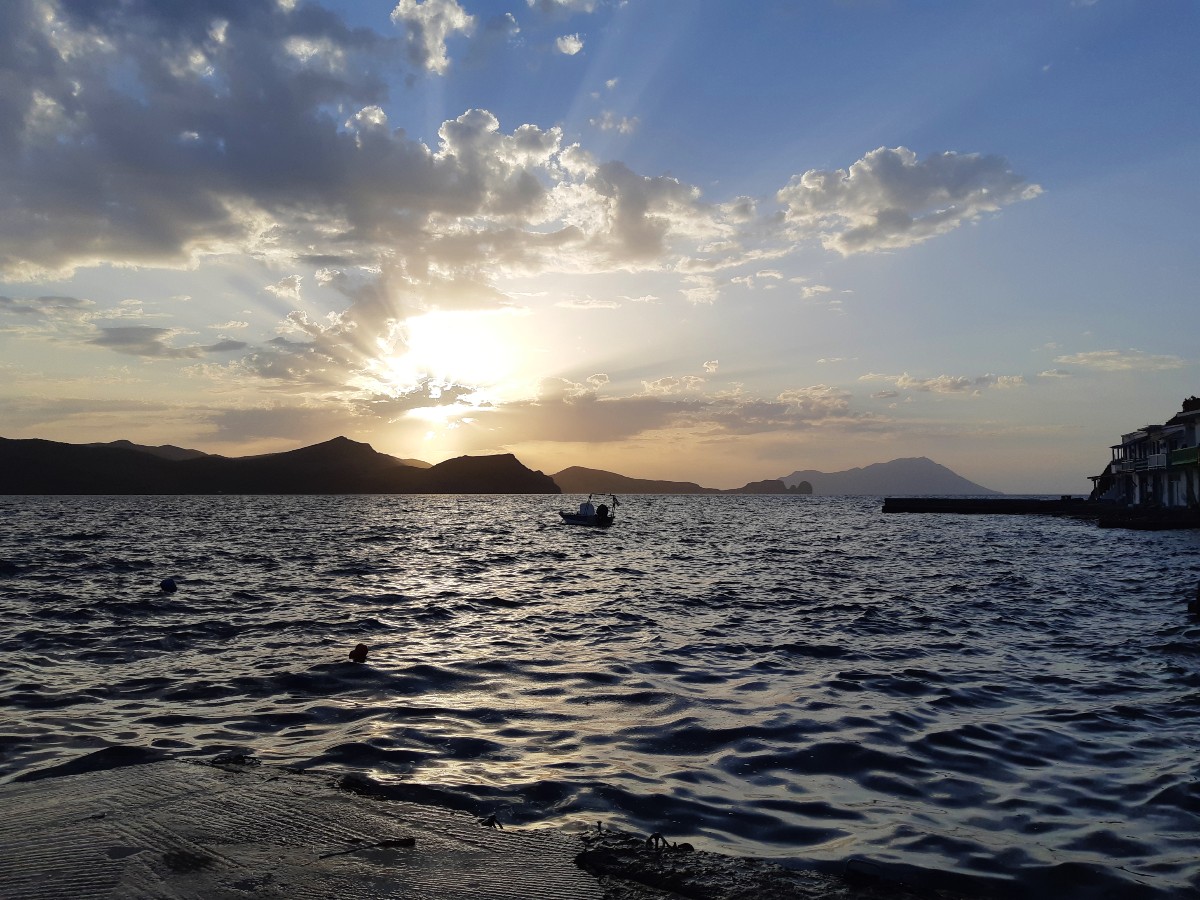
All in all, any west-facing beach will offer great sunset views. Papikinou, just opposite the popular taverna “O Chamos”, and Achivadolimni, are both great spots.
If you are after something more remote, you can try Agios Ioannis beach, past the monastery of Agios Ioannis Siderianos. You will need an appropriate vehicle, as part of the road is in rather bad shape.
9. Milos has some of the very few catacombs in Greece
Did you know that Milos is home to some of the very few known catacombs throughout the whole of Greece? They may not be as extensive or famous as the catacombs in Rome, but they are very important nevertheless.
The catacombs in Milos served as the first proto-christian cemetery in Greece, during the period 1st-6th century AD.
It is estimated that around 8,000 people in total were buried in the catacombs, at a time when Christianity was not the mainstream religion. The site was abandoned after the big earthquakes that took place in the 6th century.
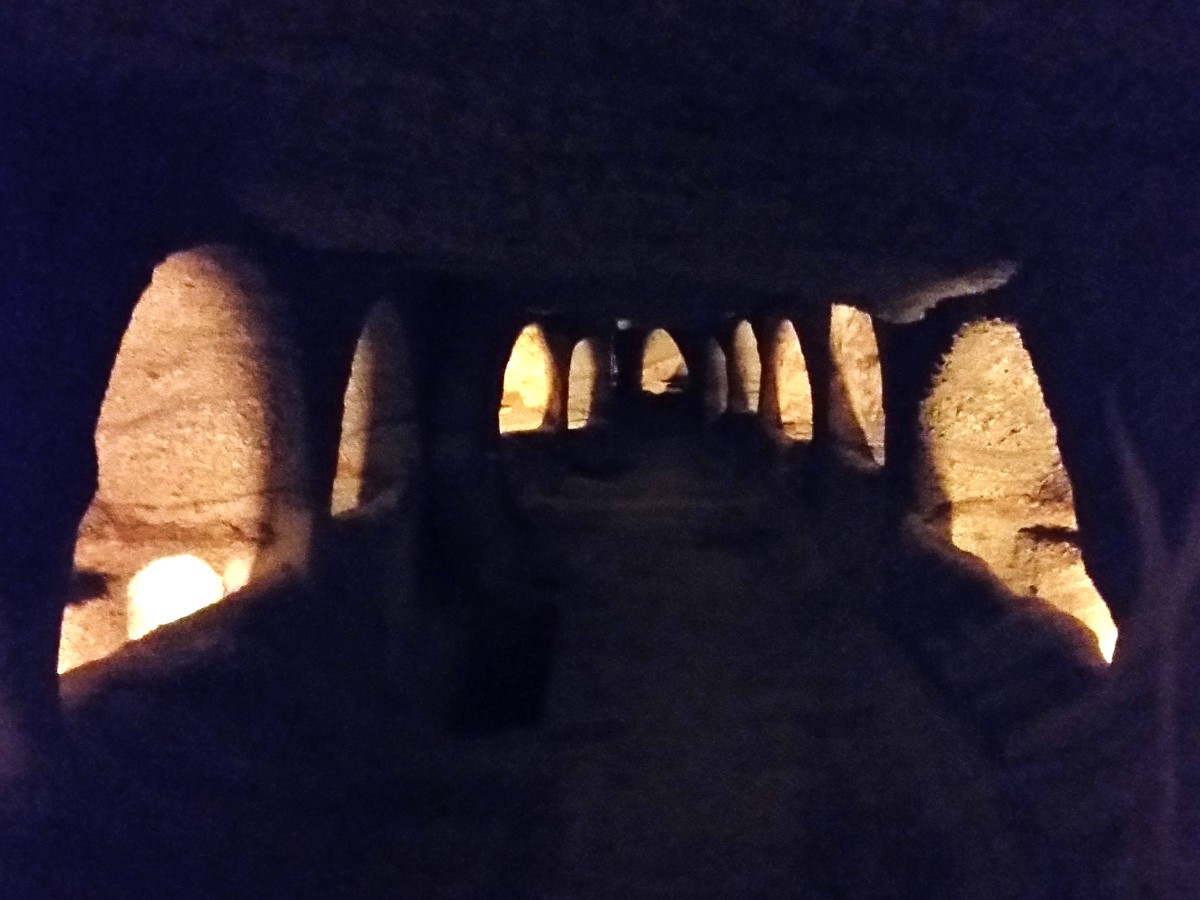
This unique archaeological site was discovered in 1844, by which time it had already been looted. The area was researched properly several decades later.
Several artefacts have been excavated in about 200 metres of corridors, such as glass vessels, pendants and other burial objects. The findings have helped archaeologists understand the burial practices and rituals of the times, and also other aspects of people’s lives, such as diet.
Due to the limited space, visitors can enter the Catacombs on a short, guided tour with a guard.
The catacombs in Milos are located near the village of Tripiti, not too far from Klima. There are walking paths that connect these areas.
Fun fact – the catacombs are sometimes classed as a cave. Another famous cave in the Cyclades is the fascinating cave of Antiparos.
10. Milos has an Ancient Theatre
A short walk from the Catacombs, you will find the Ancient theatre in Milos. This amphitheatre was probably built during the Hellenistic period, but the excavated remains date from the Roman era.
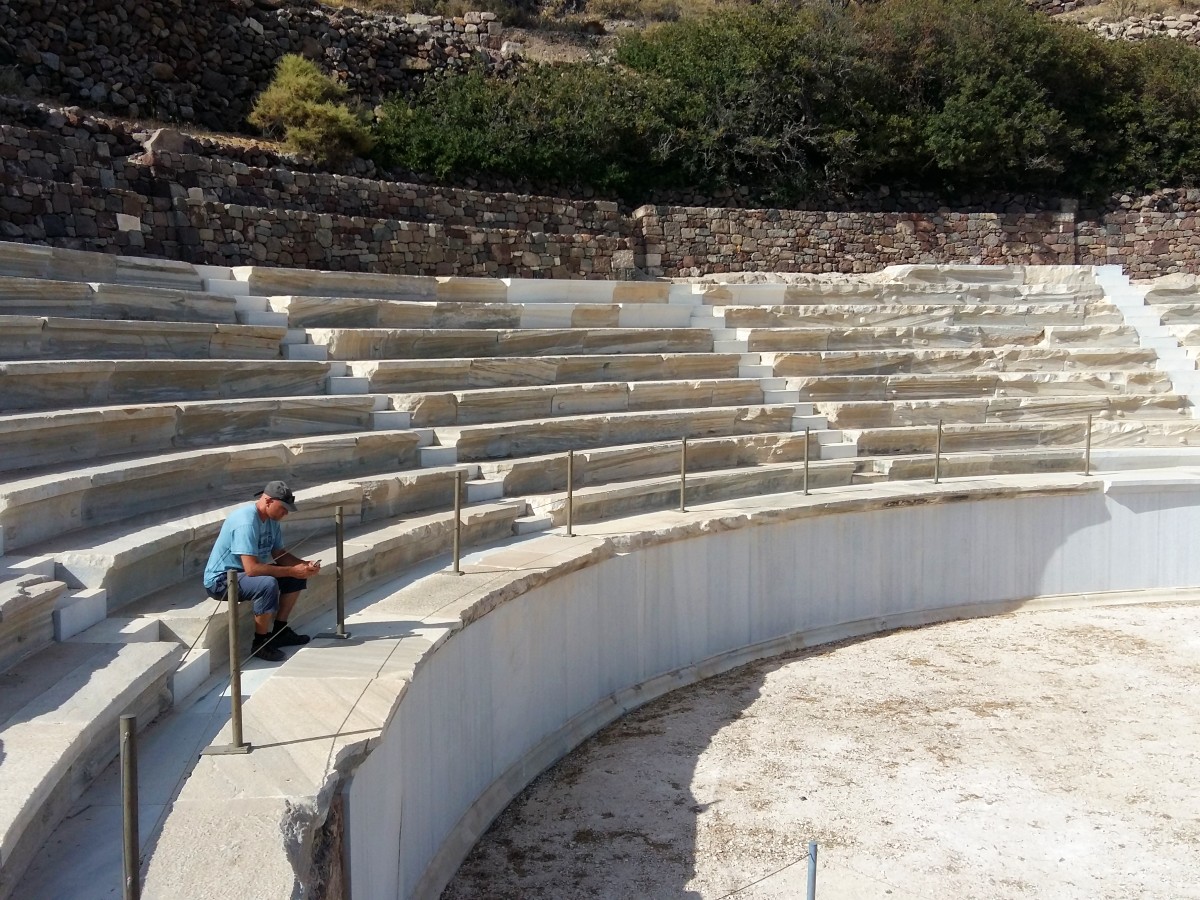
It is estimated that the theatre could originally accommodate an audience of up to 7,000 people. These days, it is open to visit at all times, and occasionally hosts events and performances.
Its current capacity is much smaller, as it can host about 700 people. Ask around if there are any events at the time of your visit.
11. The statue of Venus de Milo was discovered here
When it comes to ancient Greek statues, few are as iconic as the Aphrodite of Milos statue. Best known as Venus of Milos, it is a truly incredible work of art, exalting female beauty. Photos don’t really do it justice though!
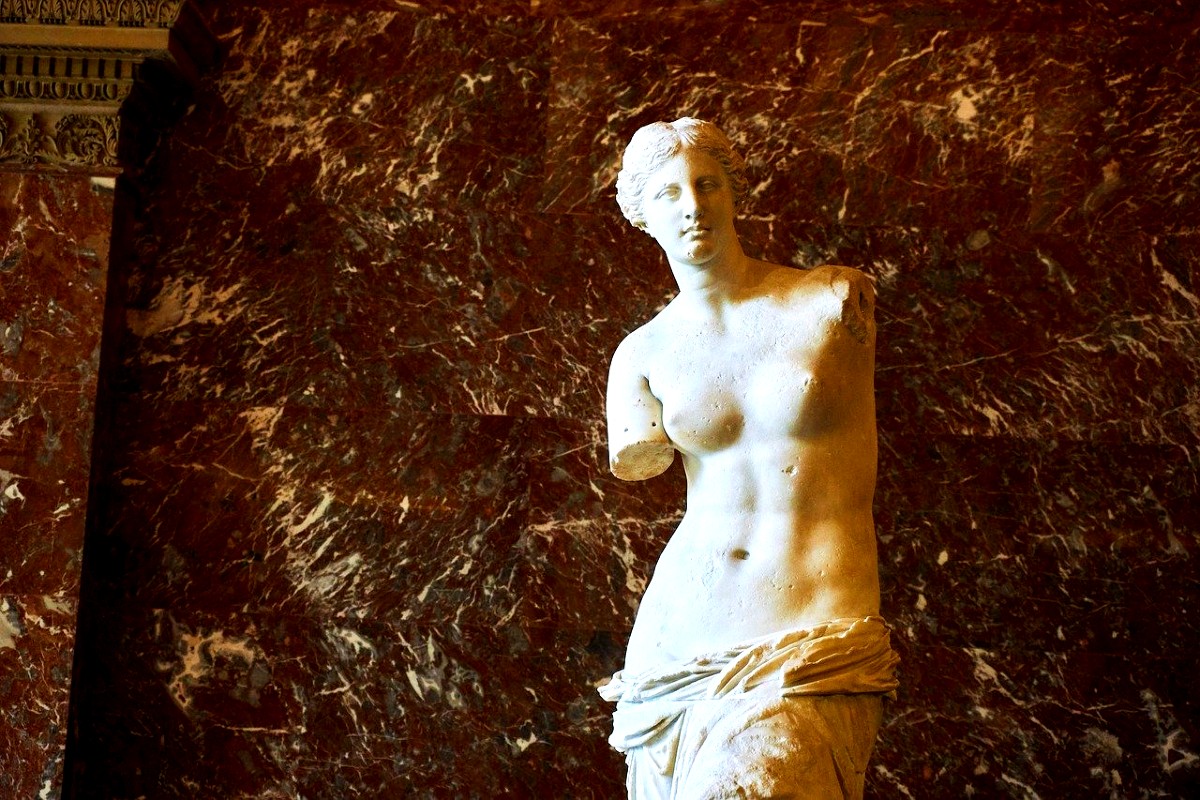
Photo source: Pixabay
The original statue can be found in the Louvre, in Paris. It is made out of marble from Paros island, and is just over 2 metres tall.
There seems to be a debate over the exact time when it was constructed, or who the sculptor was. It is estimated that it was created during the Hellenistic period, possibly around 150-100 BC.
The statue was discovered in pieces in a field in Milos, in 1820. At the time, Greece was still part of the Ottoman Empire, and it wasn’t unusual for Greek antiquities to be retrieved and exported abroad.
Venus of Milos was originally a gift to King Louis XVIII, who later donated it to the Louvre. The exact details of how the statue made it to France are unclear, as there are several theories and speculations. It is likely that French, Ottoman and possibly Greek people were involved in the process.
In later years, the Louvre offered a replica, which can be seen today in the Archaeological Museum in Milos. Even though it’s only a modern plaster cast, I found it really impressive.
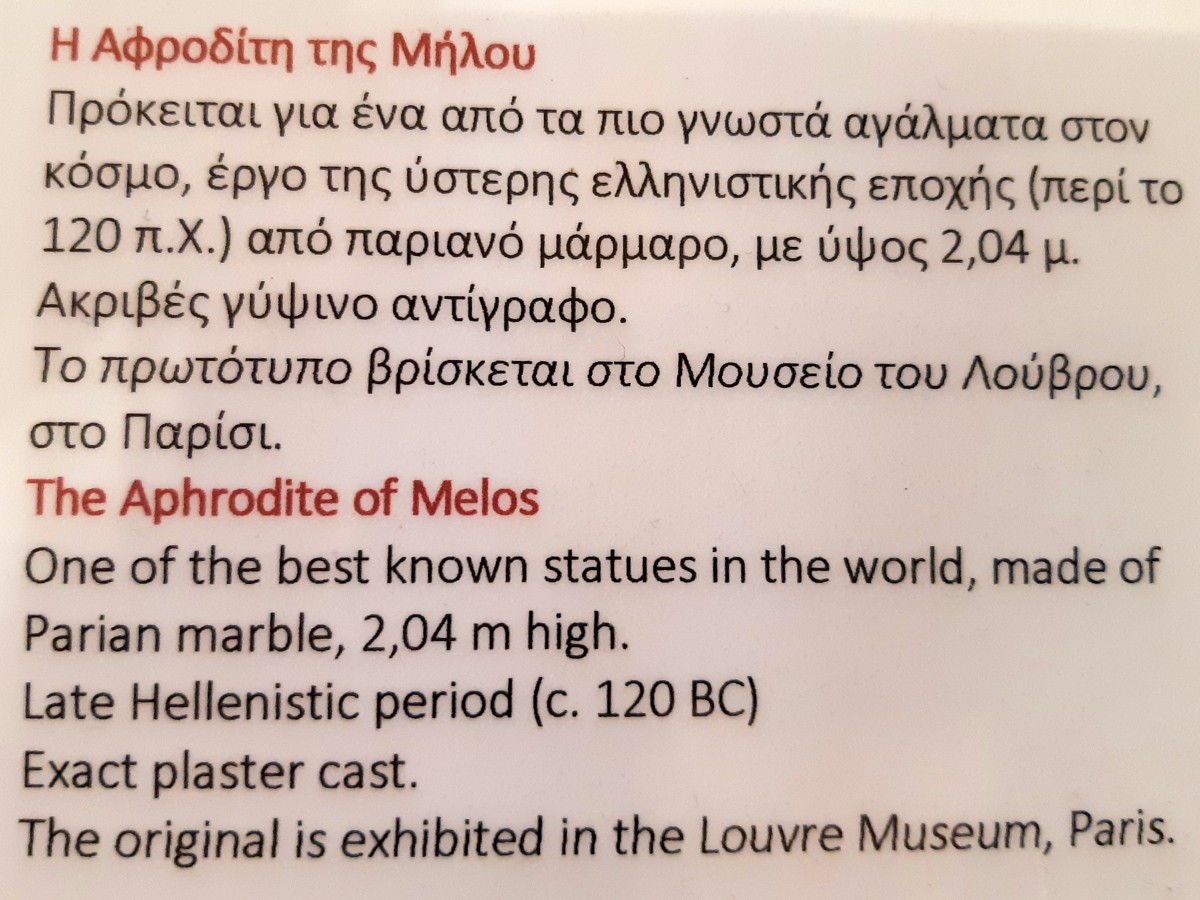
Today, there is a sign at the location where the statue was found. You can easily walk there from either the Catacombs or the Ancient Theatre.
12. Milos has some seriously delicious food
When it comes to Greek food, I am rather biased – I like it a lot! Food in Greece varies a lot between areas, and the Cyclades are home to some pretty unique flavours.
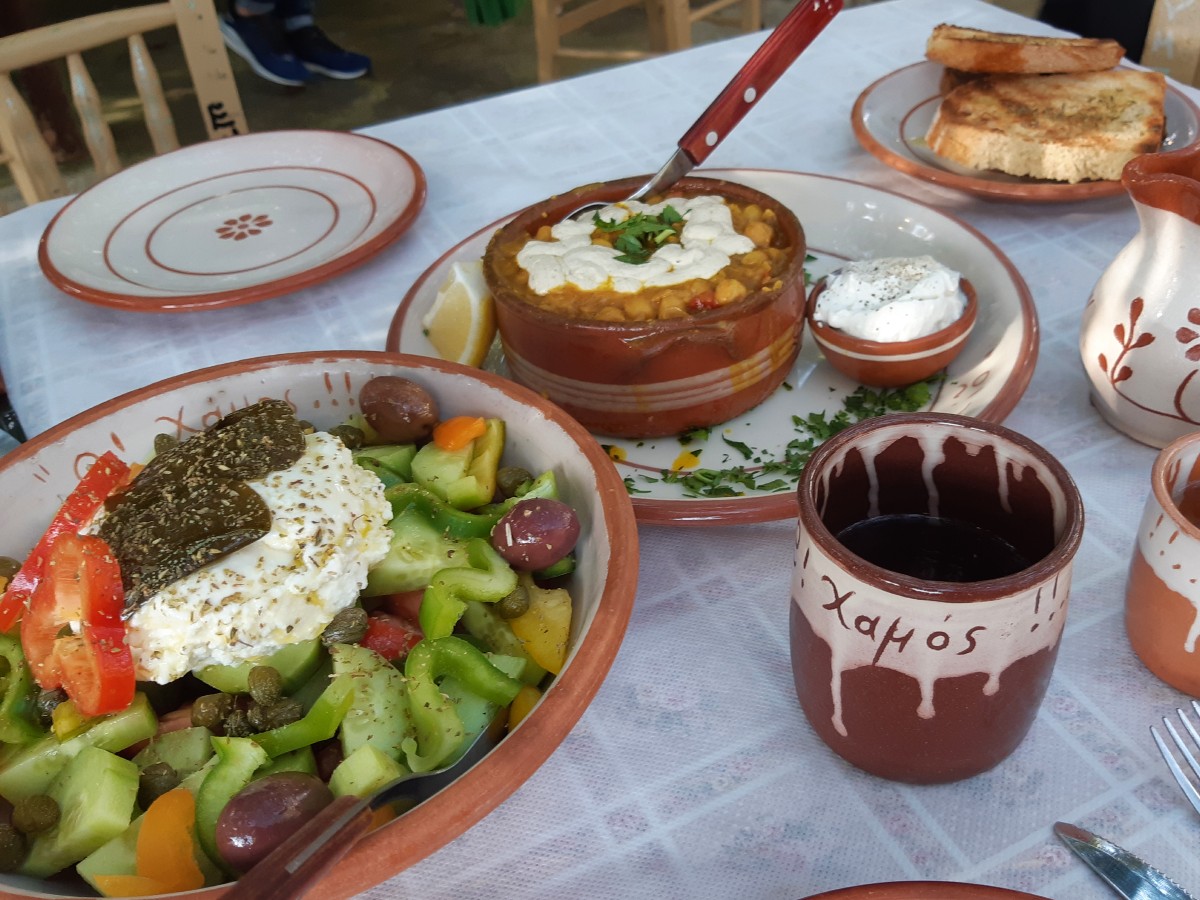
In my experience, Milos is one of the best Cycladic islands when it comes to Greek food. We have eaten in over ten restaurants in two trips, and they were all way above average!
If I could single out three restaurants, I would mention “O Hamos” near Adamas, “Medusa” in Mandrakia, and “Bakaliko tou Galani” in Triovasalos. I would return to either of these in a heartbeat!
I actually liked the food in Milos so much, that I wrote a dedicated article about where to eat in Milos!
In terms of local dishes, my favourite one was pitarakia, a type of local pie. I didn’t care much about the karpouzopita (watermelon pie), but you should try it if you get the chance. Milos is also famous for its amazing local cheeses, goat meat, aromatic honey and capers.
How to get to Milos island
There are no direct international flights to Milos. If your flight lands in Athens, there are two ways to get to Milos: by flight, or ferry.
Milos has a small domestic airport. You can catch a short flight from the Athens International airport Eleftherios Venizelos. It’s best to reserve your flights as early as possible, as last-minute prices are quite high.

Many people prefer to take a ferry. Ferries from Piraeus port in Athens take anywhere from 2.5 to 8 hours to get to Milos. During summer, there will typically be 6-7 ferries per day. You can check ferry itineraries and book your tickets on Ferryscanner.
The ferries will take you to Adamas (or Adamantas) port in Milos. This is a popular place to stay, and this is where most of the local buses depart from to other areas on the island.
Here’s a detailed guide on how to get to Milos.
FAQs about Milos
People visiting Milos often ask questions like the following:
What is Milos Greece known for?
The volcanic island of Milos in Greece is best known for its natural beauty. Due to the abundance of minerals, the island has dozens picturesque beaches and outstanding landscapes. In addition, Milos has a rich ancient history, like most of the Cyclades. The famous Venus de Milo statue was discovered here.
Is Milos a good island?
Milos is a great destination. Although its popularity is rising, the island has mostly remained unspoiled. There are plenty of interesting activities, such as boat tours and visiting ancient sites and quaint villages.
How many days do you need in Milos?
If you want to get a good taste of the island, you should allow for three days at a minimum. However, if you want to explore all the beaches, even a week will not be enough!
Is it easy to get around Milos?
Milos is best explored with your own transportation. Public buses will take you to a few areas on the island, which do not include the most remote beaches. I strongly suggest taking a boat tour of the island, where you can enjoy the amazing coastline.
Do you need a car on Milos island?
While a car is not strictly necessary, it will be best to have your own wheels if you want to explore the island properly. You can easily rent a car or quad at both Adamas port and the smaller town of Pollonia.
With that said, and given that Milos is increasingly popular, it’s probably best to pre-book a car. Check out Discover Cars, a search engine where you can compare many providers and book your holiday vehicle easily.
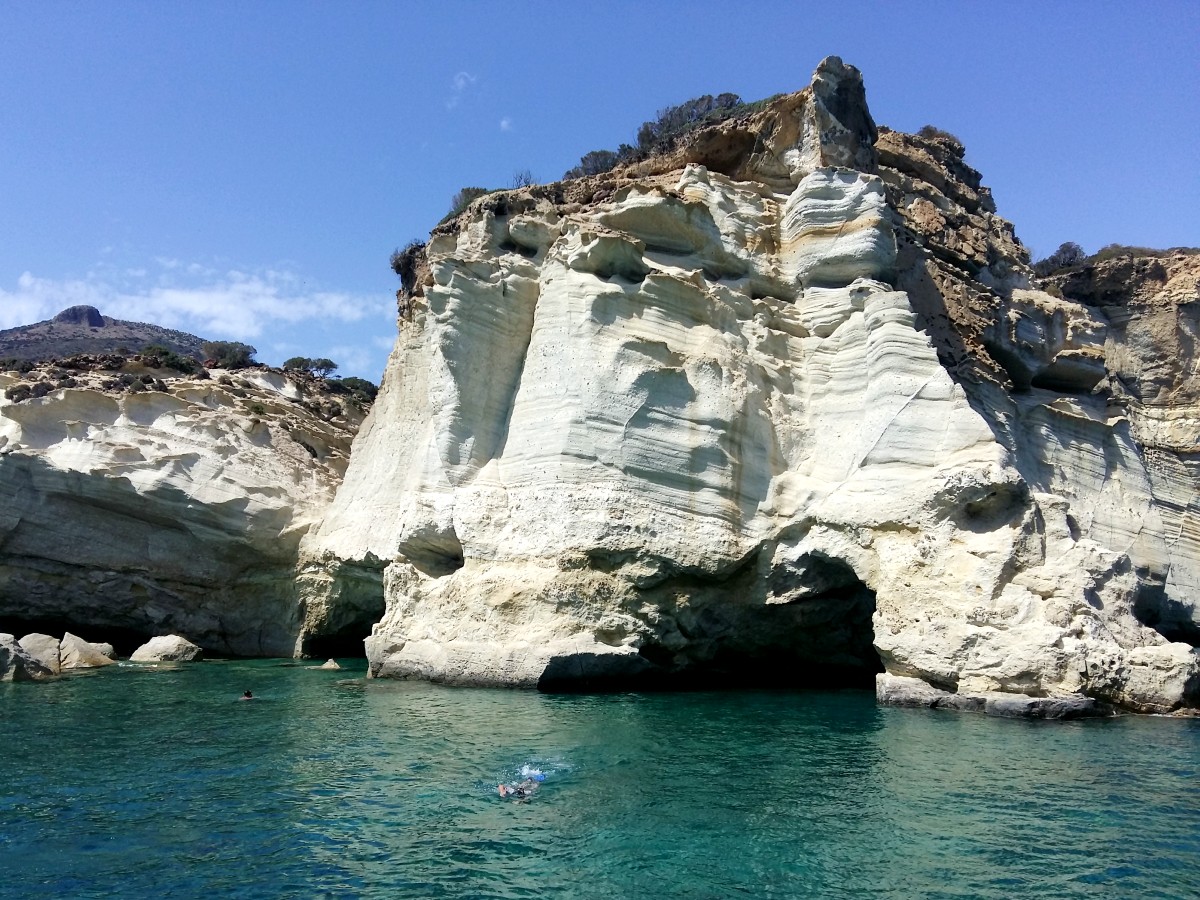
Reasons to visit Milos
I could mention several more reasons to visit Milos, but these should be enough to get you started.
If you are planning to go to Milos and have further questions, don’t hesitate to ask in the comments section! Also, look out for our Milos and Kimolos book on Amazon.
Here’s some more Greek island guides that you might find useful:
- Best time to visit Milos and Kimolos in Greece
- Where to stay in Milos
- 10 Beautiful villages in Milos
- Reasons to visit Kimolos
- Five incredible Greek islands near Santorini (yes, Milos is one of them!)
 Hi! I am Vanessa, a travel writer from Athens, Greece. Apart from writing, I like travelling, swimming, snorkelling and cooking. Since 2005, I’ve aimed to help visitors with ideas and travel tips about Greece! Feel free to get in touch through the Real Greek Experiences FB page and FB group.
Hi! I am Vanessa, a travel writer from Athens, Greece. Apart from writing, I like travelling, swimming, snorkelling and cooking. Since 2005, I’ve aimed to help visitors with ideas and travel tips about Greece! Feel free to get in touch through the Real Greek Experiences FB page and FB group.

Where do you recommend staying in Milos .
Many Thanks
Morag
Hi and thanks for your question! Having been twice, Adamas is probably better if you are planning to drive around a lot, as it’s more central, but I also enjoyed staying in Pollonia. We had our own transportation though, which is important for Milos. We’ve written a long guide on where to stay in Milos here which gives a lot more detail!